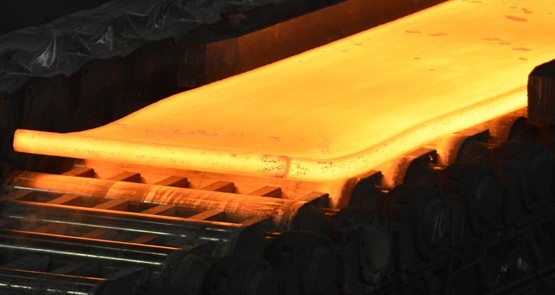
A steely surprise from China. Buried in China’s January and February production, retail and investment figures were two very conflicting stories — while retail sales and production in January and February rose less than expected, investment figures were a bit stronger than forecast (but weaker than a year go) because of an uptick in real estate investment as property prices rose in major cities like Shanghai, Beijing and in Guangdong province in the south. But this didn’t help Chinese crude steel production (a key indicator for Australia), which fell 5.7% in January to February, to 121.07 million tonnes, from the first two months of 2015 when 130.526 million tonnes were produced. But after comparing the monthly figures for January provided by China to the World Steel Association (when 63.214 million tonnes of crude steel were produced) you find February’s production was a very low 57.8 million tonnes — the lowest for any month in more than three years (in fact the lowest monthly figure since December 2012). And the Lunar New Year holiday can’t be blamed because it fell in February of last year, when 61.945 million tonnes of steel was produced. So production from last month tumbled more than 7% from a year ago and seasonal factors can’t be blamed this year. So while we can’t take one month’s figure in isolation, Chinese steel production is definitely softening. — Glenn Dyer
Hey, George, there’s another black hole in your budget. So much for austerity. The latest British budget will be handed down on Wednesday night by Chancellor George Osborne (our time). The man is claimed by some (such as the head of federal Treasury John Fraser) to be a pretty good hacker and slasher of spending, and has an 18 billion pound black hole that his minions and mandarins are busy filling as you read this. The sudden black hole threatens the proud boast Osborne and his Conservative PM David Cameron made of getting the budget into surplus by 2019-20. (Remember, that’s the surplus he forecast for 2014 back in the 2010 budget, and missed.) George is looking more and more like Joe Hockey every day (with a tinge of Wayne Swan) because of the reason for the black hole: the government and its bean-counters were too optimistic about the size of the UK economy, which grew more slowly in 2015 — 2.2% against 2.4% forecast — and much slower than Australia’s 3%. That sounds familiar, doesn’t it? That left the UK economy 1% smaller than the 1.882 trillion pounds (A$3.57 trillion) that the UK Office for Budget Responsibility forecast just three months ago. And why did this happen? Overly optimistic forecasting and very, very low inflation. That in turn meant that British nominal GDP hardly grew in the fourth quarter (that is something we know all too well in Australia where nominal GDP grew 1.9% last year, the lowest for decades). In fact the GDP deflator (the key measure of inflation in the national accounts) was zero in the December quarter — the lowest that has been in 55 years! — Glenn Dyer
Central bank week redux. Or so it seems, after the European Central Bank’s starring role last week. This week the heavy hitters lumber into the limelight with the Bank of Japan meeting today and tomorrow (but you can bet it won’t startle everyone with another move like the one on January 29, when it announced a bold adventure down the negative interest rate route). The Bank of England won’t change rates for the 87th month in a row on Thursday night, while the Swiss National bank will tell us that living with negative interest rates and a super high franc is hell. Tomorrow the Reserve Bank of Australia releases the minutes of its March meeting, while assistant governor Guy Debelle (he oversaw the Bank for International Settlements report questioning negative interest rates as a fully understood policy), and Lici Ellis, the head of the Bank’s Financial Stability Department speak at a risk conference on Friday. And on Thursday night (our time) Switzerland will tell us that living with a high currency and negative interest rates isn’t fun. But the 10,000 dollar gorilla on the back of the global economy waddles up to the plate in the early hours of Thursday morning (our time) when the US Federal Reserve releases its usual post-meeting statement, along with updated economic forecasts and the now-familiar “dot plot”, which charts the views Fed members have of where interest rates will be in the next one to two years — “best guesses” might be a better description. — Glenn Dyer







Maybe we could make more superior steel in Australia, Chinese steel from what I am told and observed is crap.
If ever there were a refutation of standard kapitalist phantasy, it has to be negative interest rates.
Log may they reign!
Those with $tockholm $yndrome,ie economists and other devotees of the dismal delusion who would not be fed in a sane society, are now in the position of the Kremlin’s Chief Ideologist who made an air-dash to Warsaw when Solidarity took over to review their doctrinal purity.
I don’t think that he was even met at the airport and soon thereafter the USSR disappeared in a fog of futility.
How soon before we in the West put the same ‘useless idiots’ into the irrelevance to which they belong?